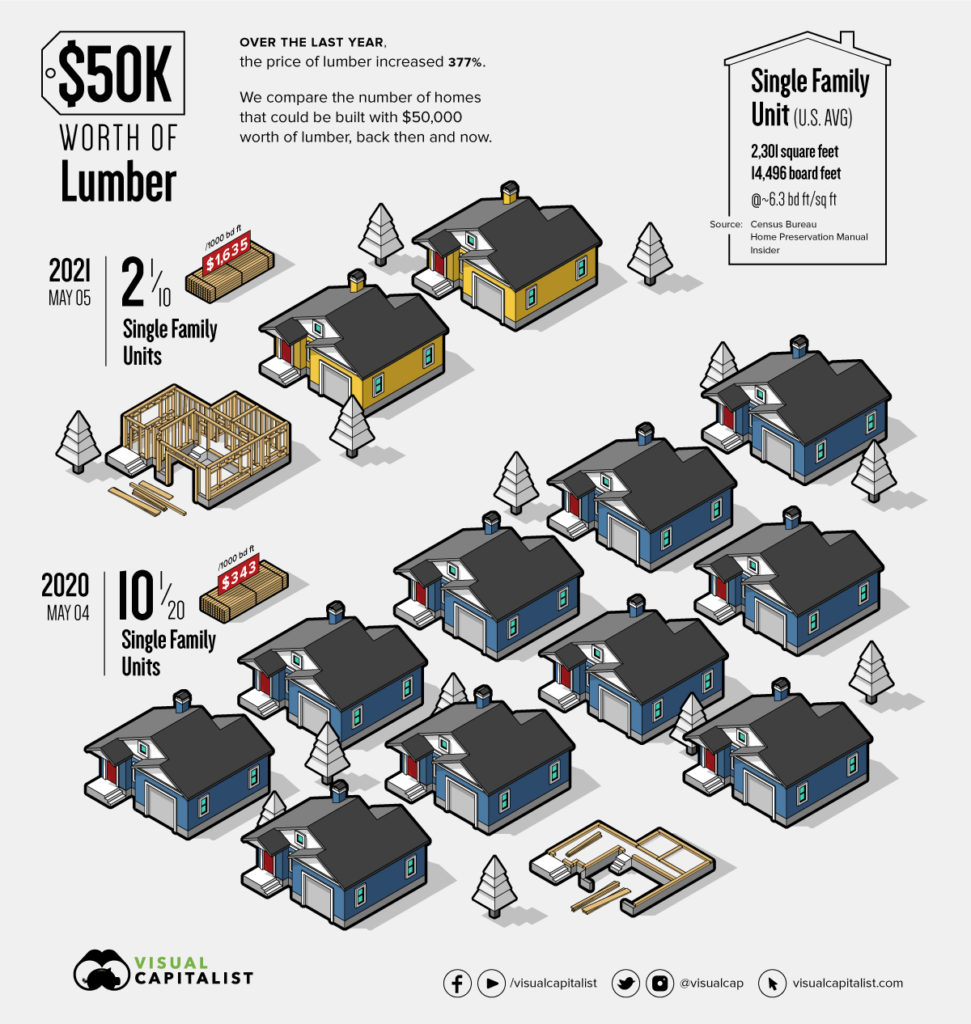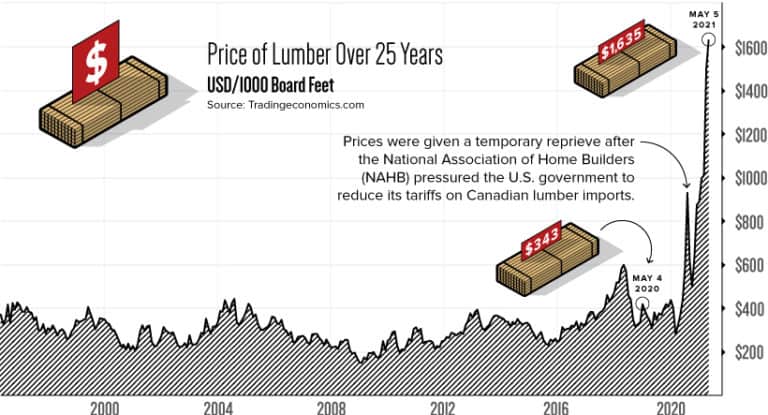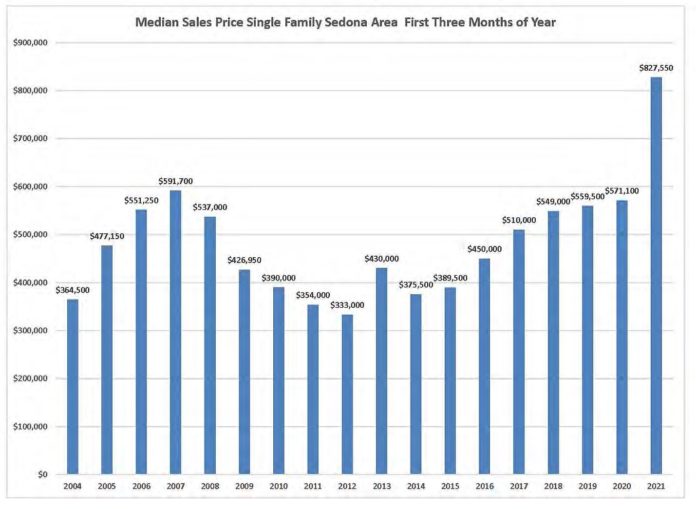
Four times a year, Randy Crewse, of Arizona Prime Real Estate, puts together an analysis of the state of the real estate market in Sedona and the surrounding areas, taking into account home prices, the number of homes on the market, and how quickly homes are bought once they are on the market.
His reports full of stats and charts are not known for dramatic language, but this April, he started off his report with a warning.
“We, by that I mean the entire country, just not Sedona and the Verde Valley, are in a real estate market that is unmatched by anything I have seen or experienced in my 46-plus years in the real estate business,” Crewse wrote. “The severe lack of inventory is causing an extraordinary amount of upward pressure on sales prices.
“The median sales price for single family homes in the Sedona area for the first quarter of 2021 came in at $827,550, up 44% from the first quarter of 2020.”
Throughout the Verde Valley, real estate agents are seeing an unprecedented spike in home prices, as reduced construction from a year of pandemic crashes into increased demand that was pent up from that pandemic year.
“For some reason with COVID-19, it basically increased. Everybody wanted to be out of cities,” said William Hamburg, the Sedona branch manager for Realty One Group. “Their employers were letting them work virtually, and why wouldn’t you want to work virtually in Sedona? A lot of people are relocating, and keeping their jobs, so they have that big city pay, so Sedona looks affordable.”
Crewse’s data show that there are just 44 homes currently for sale and not under contract in Sedona, and with a median sales price of $1.275 million. Just 18 houses are for sale below $1 million, and just three below $600,000.
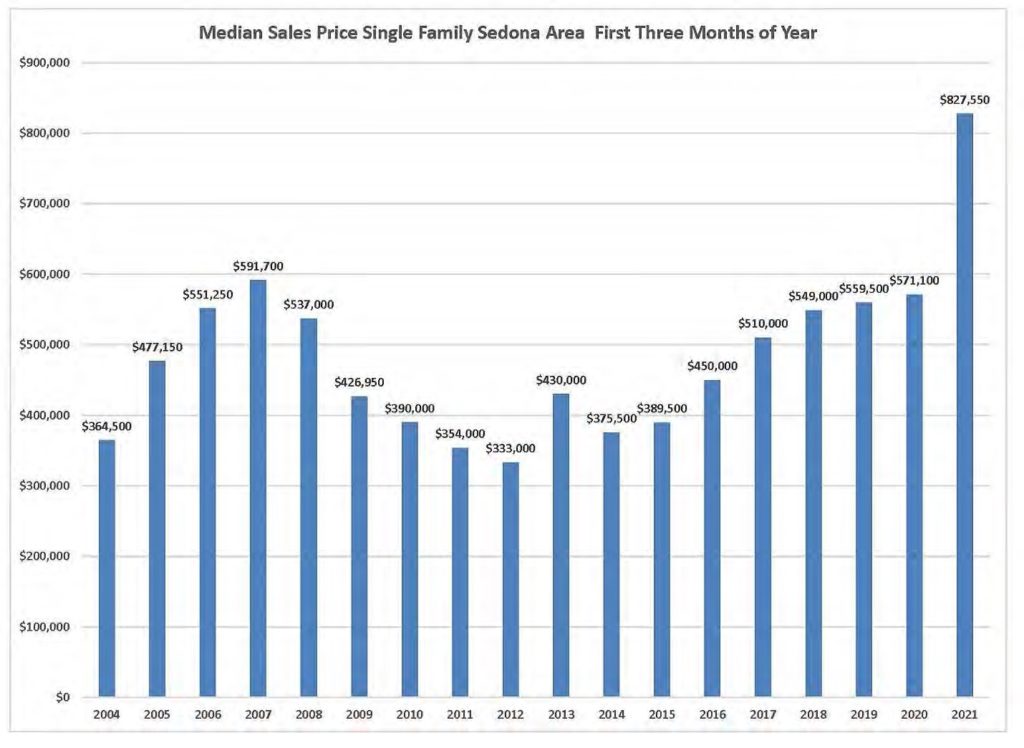
“If you’re making $15 an hour in this town, you can’t afford anything in the Verde Valley. That is the real story,” Crewse said. “It’s sad. It tears at the fabric of our community.”
According to multiple real estate agents, a significant portion of buyers coming to Sedona are from California, where cost of living and a housing shortage have pushed many homeowners out of the state. Many are engaging in 1031 exchanges, where capital gains taxes are deferred by transferring to a similar investment, most commonly by selling a house and using the money from the sale to buy another.
As a result, former Californians are buying up houses quickly, and often for above the asking price, still far below the price of the house they sold in California.
“You move that money from a house in California to a house here,” Hamburg said. “People have to spend the money or else they pay taxes. People are taking above-asking [price], all cash, so they don’t pay taxes on their 1031 exchange.”
Sedona properties have been expensive for a while, but with the supply of houses among the red rocks unable to keep up with demand, the fire in the housing market has spread to surrounding communities as well.
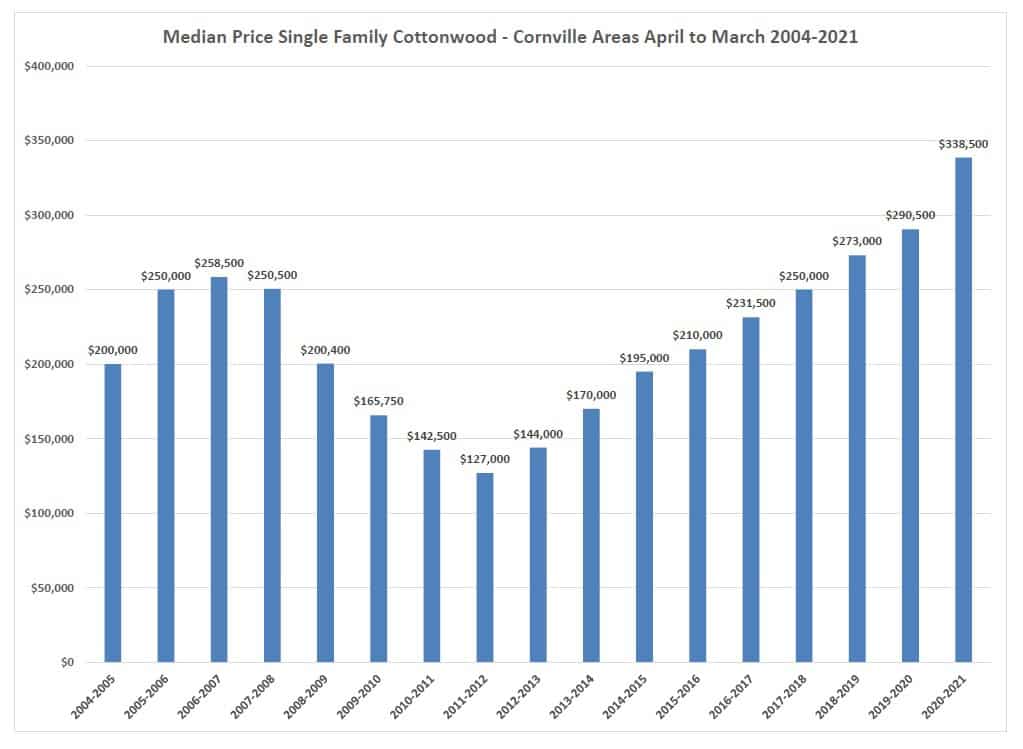
As prices increase in Sedona, existing and new residents are moving to other Verde Valley communities, driving up prices everywhere. The median sales price for single family homes in Cottonwood and Cornville up 13%, or $48,000, compared to a year ago. According to multiple real estate agents, a significant portion of buyers are from California, where cost of living and a housing shortage have pushed many homeowners out of the state.
“The Verde Valley’s been discovered,” said Dan Mabery of Coldwell Banker in Cottonwood. “We’ve got declining enrollment in schools everywhere but especially in Sedona because families can’t afford to live there. Now that’s moving to Cottonwood, and then Camp Verde, and then Rimrock and Lake Montezuma.”
“They’re selling single-wides for up over $100,000, and falling-apart single-wides — full of mold, just crap,” said Bridget Bowers of Camp Verde Realty. “The prices are so high.”
In addition to the influx of people moving into the area, housing construction in the area has lagged behind, due to a combination of pandemic difficulties, high costs of building materials, and difficulty getting development projects approved due to neighborhood opposition.
In the past year, the price of lumber has increased by 377%, which has made the cost of building new homes increase as well.
Hamburg said that he has been trying to build new housing as well in the area, but had a difficult time getting approved in Sedona, moving to try and build developments in Cottonwood or Camp Verde instead.
“Locals and the city need to be more open-minded about how we can grow sustainably,” Hamburg said. “We can’t stop this, but we can do it sustainably.”
Housing supply is even more limited by the rise of short-term vacation rentals, which real estate agents say are taking up a significant portion of the housing stock. In 2016, Arizona Gov. Doug Ducey signed Senate Bill 1350, forbidding municipalities from prohibiting short-term rentals like those advertised on Airbnb, Vrbo and Craigslist, which Sedona had tried to do. In the years since, the area has seen a sharp rise of houses being used primarily for tourism, instead of long-term rentals, which Sedona officials estimate to be around 15%, perhaps higher.
“People are buying up what would be residential housing and using it for Airbnbs and that drives up the market,” Mabery said.
“Nobody has anywhere they can move,” Bowers said. “Even if you sell your house at the highest this market has ever been, you’ve got to buy in this market.
With the high price of homes in the area extending to rental prices as well, the squeeze is felt most acutely by middle-class and working-class residents in the area, many of whom can no longer find affordable housing to live in. Employers such as local restaurants have complained about the ability to find workers, partially related to the difficulty of lower income individuals finding affordable living in the area.
“The real challenge is that there is no workforce housing in the Verde Valley, so we can’t bring workers in because there is no place to live,” said Mary Chicoine, executive director of the Verde Valley Regional Economic Organization. “We’re seeing businesses closing or cutting hours because they can’t find employees.”
Even before the 2021 spike, VVREO had commissioned a study on affordable housing in the Verde Valley with the help of some of the local municipal governments, which is nearing completion and is expected to be presented before some of the local leaders on May 17.
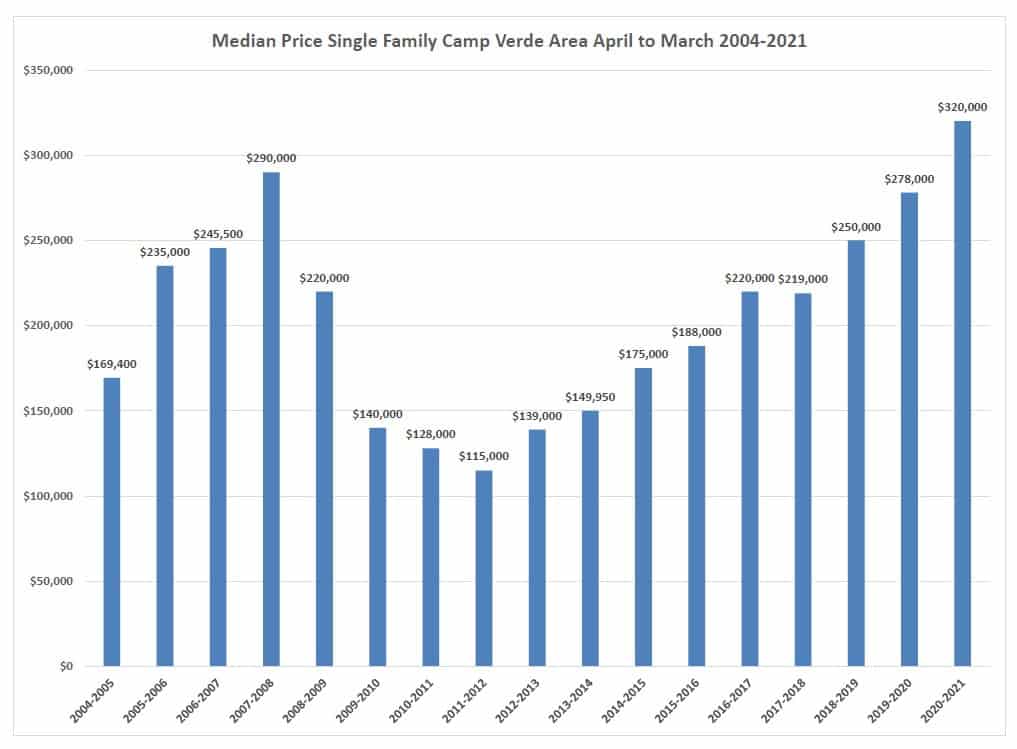
The median sales price for single family homes in Camp Verde is up 15.1%, or $42,000, compared to a year ago. “They’re selling single-wides for up over $100,000, and falling-apart single-wides — full of mold, just crap,” said Bridget Bowers of Camp Verde Realty. “The prices are so high.”
Chicoine worries that beyond the repercussions for businesses, the housing crisis is changing the very nature of the Verde Valley’s population, making the area skew more and more just toward the rich at the expense of poor and middle-class residents.
“Those individuals need housing that is affordable. Unfortunately there is none left,” Chicoine said. “Healthy communities are diverse communities. With the cost of housing rising so dramatically. It has changed the diversity of our community. We say it’s workforce, but it’s families and things like that that aren’t coming into the valley because they can’t afford it.”
The Verde Valley is no stranger to housing price booms, such as the one that predated the Great Recession in 2008.
